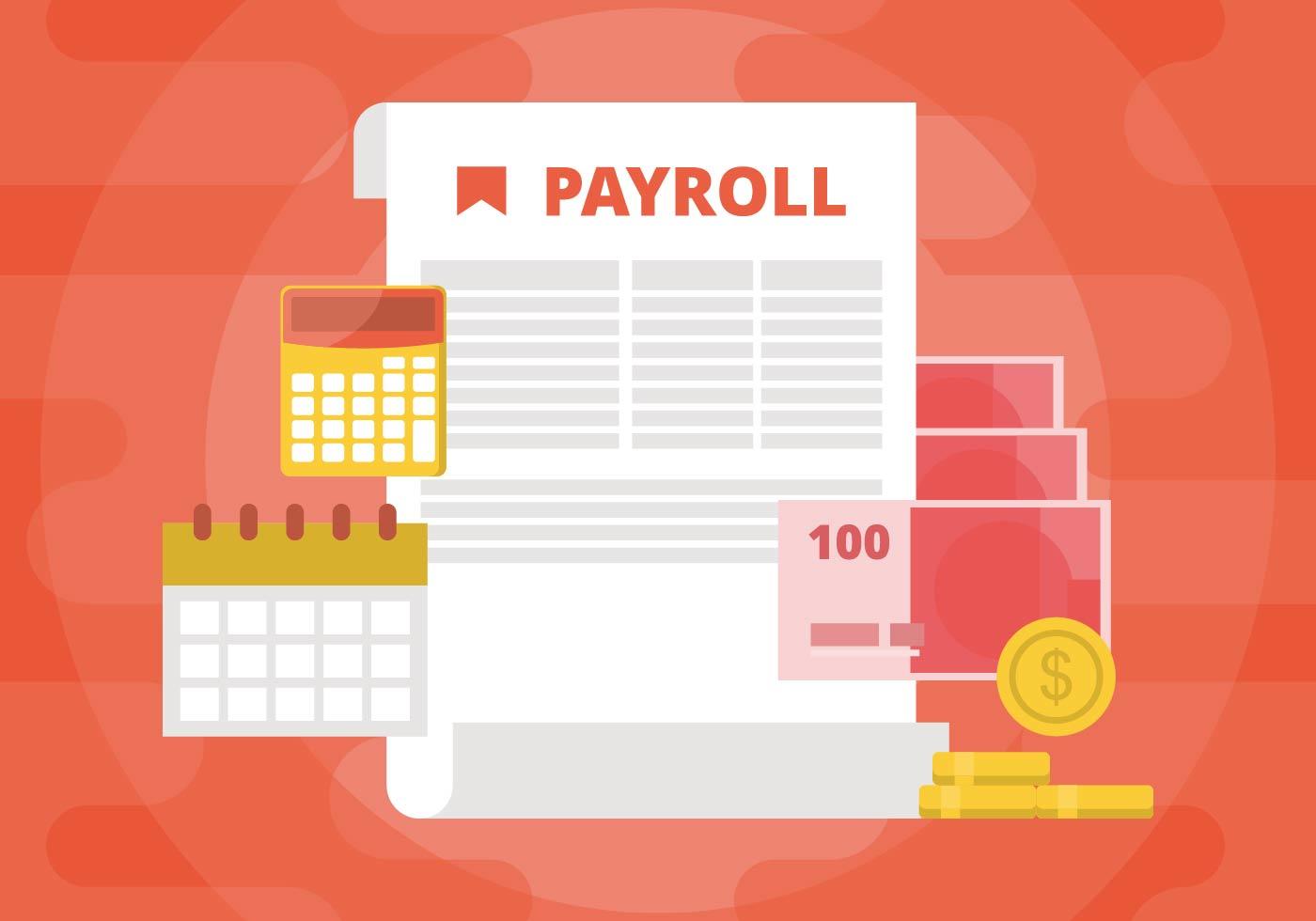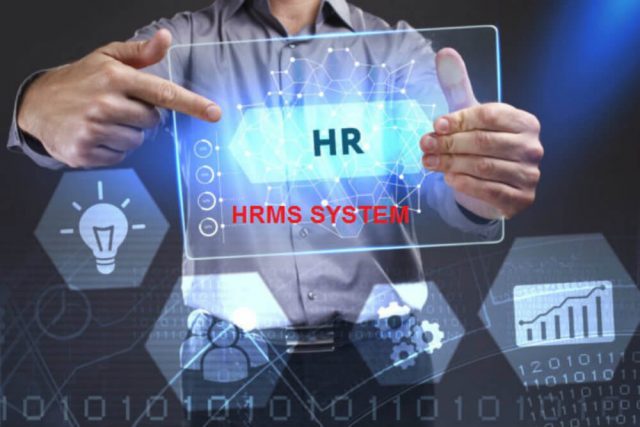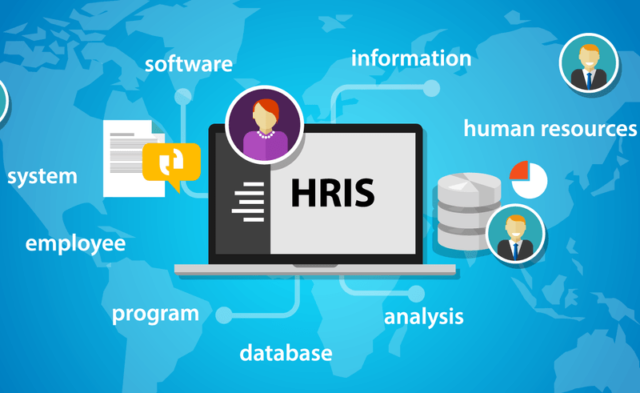Selecting the right HR and payroll software in Bangladesh is important. Especially for corporate payroll software needs in Bangladesh. It can significantly streamline your day-to-day business operations. Saving your valuable time and effort.
Managing a business, especially one with a large workforce exceeding 300 employees is hard. It necessitates efficient handling of performance evaluations and other crucial HR and payroll tasks. In such scenarios, relying on appropriate HR and payroll software becomes imperative.
However, to select HR Payroll software isn’t a straightforward task. It requires careful consideration of various factors and features tailored to your business needs.
Now where you should start? Don’t worry. Below we nail down some essential factors that you should consider before selecting a perfect one for your business. So read ahead to have the right HR and payroll solution.
HR and Payroll Software in Bangladesh
Introducing HR and Payroll Software in Bangladesh to transform your Business Operations
In Bangladesh’s dynamic business environment, efficient HR and payroll software is essential. Such software offers tailored solutions to streamline administrative tasks. Manage employees and process payroll seamlessly.
Say goodbye to manual record-keeping and complex payroll calculations. HR software in Bangladesh automates attendance tracking, salary disbursements, and report generation.
Compliance with labor laws and tax regulations is built-in. Ensuring businesses stay on the right side of the law.
Whether you’re a startup or a corporation, investing in HR and Payroll Software is crucial. It empowers businesses to focus on core objectives. Drive productivity. Lastly, ensure transparency and accountability.
Let’s first understand the basis of cutting-edge HR & Payroll software. Later we will help you select the most suitable one.
What is HR Software in Bangladesh?
HR software in Bangladesh refers to advanced technology solutions. It is designed to streamline and automate human resource management. These are processes within organizations operating in Bangladesh.
It typically includes modules such as:
- Employee information management
- Attendance tracking
- Payroll processing
- Performance evaluation
- Recruitment and training management.
All these can be customized to suit local labor laws, tax regulations, and cultural practices prevalent in Bangladesh.
Many HR software solutions in Bangladesh are cloud-based. Allowing for easy access and data security. Such as Jibika Plexus. They often integrate with other business systems like accounting software for seamless data flow. It’s a great instrument to have in your HR basket.
What is Payroll Software in Bangladesh?
Payroll Software in Bangladesh is a cloud-based solution. Tailored to automate, manage, and maintain employee payments within businesses. Properly configured payroll software lets you easily maintain compliance with tax laws and other financial regulations. It helps in reducing calculation errors and generates a quick and integrated report.
Here’s how it functions:
- Generates quick and integrated reports.
- Provides remote accessibility.
- Implements robust security measures.
- Offers employee self-service portals.
- Scalable to accommodate business growth.
- Integrates with other business systems.
- User-friendly interface for easy navigation.
Understanding the Responsibilities of HR and Payroll
HR and payroll software in Bangladesh is an invaluable asset. They help businesses work better and make sure everything is correct and follows the rules.
These software tools use information and automatic processes to make things run smoothly and accurately. They handle complex tax rules to figure out how much employees should be paid, including taxes and deductions. This helps keep the company’s finances in good shape and keeps employees happy.
Keeping track of when employees are at work or on leave is easier with these software systems. They help managers know who’s working when and make sure everyone gets the time off they need. This helps the company use its resources well and keeps everyone on schedule.
Having all employee information in one place helps businesses make smart decisions based on data. It includes personal details, work history, and how well they’re doing their job. This makes it easier to hire new people, bring them onto the team, and help them do their best work.
Making sure the company follows the rules about labor laws and regulations is important. HR and payroll software help by doing the math and making reports to show that everything is done correctly. This helps avoid getting in trouble and keeps the company running smoothly.
Employees can use self-service tools to check their pay, request time off, and update their details. Managers can use data to make decisions about approving time off and see how things are going in their teams. This makes things clear and helps everyone get things done faster.
These software systems also work well with other programs like accounting and timekeeping. This makes it easier to share information and work together. It stops mistakes from happening and helps everyone work together better.
Overall, HR and payroll software are really helpful for businesses in Bangladesh. They make things run smoothly, make sure everyone gets paid right, follow the rules, and help the company grow.
Overview of HR and Payroll Software Features
HR and payroll software are like Swiss Army knives for businesses. They offer a wide range of tools to manage employees and their compensation smoothly. Here’s a simple breakdown of what these HR and Payroll Software Features can do:
Employee Information Management:
This feature helps keep all employee details organized in one place. It stores things like names, addresses, work history, and important documents such as contracts and performance reviews.
Attendance and Time Tracking:
This tool helps businesses keep track of when employees arrive at work, how many hours they work, and when they take time off. It uses things like fingerprint scanners or phone apps to make sure records are accurate.
Payroll Processing:
Payroll processing is like a big calculator that figures out how much employees should be paid. It handles everything from regular salaries to bonuses and deductions for taxes. It makes sure employees get paid on time.
Benefits Administration:
This feature helps manage employee benefits like health insurance and retirement plans. It keeps track of who’s eligible for what benefits and helps with signing up and keeping records.
Performance Management:
Performance management is about keeping track of how well employees are doing their jobs. It helps set goals, do performance reviews, and give feedback to help employees improve.
Training and Development:
Training and development tools help employees learn new skills and improve on the job. They might include online courses and resources to help employees grow in their roles.
Recruitment and Applicant Tracking:
This feature helps businesses find and hire new employees. It posts job openings, collects applications, and helps managers keep track of candidates through the hiring process.
Compliance and Reporting:
Compliance and reporting features make sure the business follows all the rules and regulations. They generate reports on things like employee demographics, payroll costs, and turnover rates to help keep everything in order.
Which Kind of Company Requires HR Payroll Software?
HR payroll software can be beneficial for various types of companies, regardless of their size or industry. Here’s a breakdown of the kinds of companies that typically find HR payroll software invaluable:
Small Businesses:
Small businesses often have limited resources and personnel dedicated to HR and payroll tasks. HR software for small Business helps to streamline processes. It manages employee data efficiently. And ensure compliance with labor laws without needing a dedicated HR team.
Medium-Sized Enterprises (SMEs):
Medium-sized enterprises face growing complexities in managing HR and payroll functions as they expand. HR payroll software offers scalability and customization options to accommodate their evolving needs. While providing automation to handle increasing volumes of employee data and payroll transactions.
Large Corporations:
Large corporations with extensive workforces and multiple locations benefit from HR payroll software. It helps to centralize HR and payroll processes. These software solutions offer robust features for managing large volumes of employee data, tracking attendance, and processing payroll across different departments or regions. Lastly, ensures compliance with diverse regulatory requirements.
Startups:
Startups, especially those experiencing rapid growth, find HR payroll software essential for managing HR tasks efficiently from the outset. These software solutions enable startups to establish HR processes. Such software helps track employee information and handle payroll accurately while focusing on scaling their businesses.
Corporate Offices:
Corporate offices, regardless of industry, require HR payroll software to manage their employee. It involves data, processing payroll, tracking attendance, and ensuring compliance with labor laws and company policies. Payroll software for corporate offices provides a centralized HR management solution. It allows corporate HR departments to efficiently handle personnel matters across various departments and locations.
Sweater Factories:
Sweater factories often employ a large workforce with diverse skill sets and job roles. Payroll software for sweater factory in Bangladesh helps manage so many sites. Employee schedules, tracks production targets and calculates wages based on piece rates or hourly wages. And maintains compliance with labor regulations specific to the textile and garment industry.
Textile Manufacturers:
Textile manufacturers deal with complex production processes and labor-intensive operations. Payroll software for textile in Bangladesh assists in playing so many roles. Such as managing employee shifts, tracking work hours, calculating overtime pay, and monitoring productivity metrics. It also helps textile companies comply with industry-specific regulations. Maintain accurate records for audits and reporting purposes.
Garment Manufacturers:
Garment manufacturers face similar HR and payroll challenges as textile companies. Including managing large workforces, tracking production outputs, and ensuring fair compensation for workers. Software for HRM practices in Bangladesh garments streamlines these processes. It improves efficiency and enhances transparency in payroll management. Helping garment manufacturers maintain competitiveness in the market.
10 Things to consider before selecting HR & Payroll software for business
Now coming to the main point. HR & Payroll bring countless numbers of benefits to your business. Only when you can select and use it in the right way. So here are some important factors to consider.
1. Analyze your business requirement
Before picking up the HR & Payroll Software, you need to think from your business perspective. What’s the actual need of your business? Without analyzing that you can’t buy the right software. Your software requirements can be understood when you fully understand your business requirements. Business growth and success rate as well as the strategic plans you are going to take will be linked with the software.
Here, you can discuss this with your HR team. Note down all their comprehensive requirements. That will help you gain more knowledge about the actual business requirements.
2. Consider your Business Size
Calculate the number of employees and clients your business has. Any software you purchase needs to include the number of employees your company works with.
When you implement any payroll software, you have to allow multiple user access. For that, you need to consider your business size so you can find the right solution. Many payroll solutions are priced differently based on the Business Size. So it is essential to figure it out before.
Who will be the actual user?
Decide who will be responsible for working mostly on the software. A messy, unusual feature-packed software can confuse anyone. Your employees need a simpler and user-friendly interface. Software that contains fewer but useful features will work great in that situation. Simplicity is important in this case. Or else, the more complex software you pick, the more trained employees are required for business.
3. What features are needed?
It’s important to research the features of the software. You have to check whether the new one syncs properly with your existing one.
If not, you’ll be wasting time and money buying that. At times, it happens that you buy such solutions that are missing out on the features that you need. Or, not working properly. Or, too complicated to work with. So it suggested checking the software features before purchasing.
For that ensure all your present and past solutions have the integration capability. The new one needs to be compatible with your old one and the work associated with it. Also if you brought a separate solution for your HR & Payroll department. It is mandatory to check whether your purchased one is properly integrated.
Here’s an example of features you should look for when looking for HR and Payroll software in Bangladesh:
Data Security and Compliance:
It’s crucial to prioritize software solutions that ensure data security and compliance with relevant regulations such as GDPR and HIPAA. Look for features like encryption protocols, access controls, and compliance certifications to protect sensitive employee information.
Attendance Tracker:
An attendance tracking feature allows you to monitor employee attendance, track work hours, and manage leave requests efficiently. Look for software that offers customizable attendance tracking options to suit your organization’s specific needs.
Employee Performance Tracker:
Performance tracking tools enable you to evaluate employee performance, set goals, and provide feedback effectively. Seek software with performance management modules that allow you to conduct performance reviews, track progress, and identify areas for improvement.
Onboarding Management System:
A robust onboarding management system streamlines the new hire process, facilitating smoother transitions for employees. Look for software that offers such features. Such as electronic document management, task assignment, and compliance training modules to enhance the onboarding experience.
4. Is the software user-friendly?
When checking out HR and payroll software, it’s super important to see if it’s easy for people to use. User experience is important as it helps folks get their work done faster, saves time on training, and makes everyone happier.
You’ll want to find software that looks neat and is easy to figure out without needing a lot of training or being a tech expert.
The software should also be like a well-organized book – everything should be in the right place, easy to find, and not confusing. Buttons and menus should be clearly marked so that people can quickly find what they’re looking for.
In simple terms, user-friendly software is like a helpful friend that makes everyone’s work easier and more enjoyable.
Is mobile-friendliness on your priority list?
There are 4 billion mobile users globally. Among them, 66% of users use mobile devices frequently for accessing any document. If you are planning to run the software on the go. Or, need such software that your employee can operate easily while working remotely. Then having software that is compatible with multiple devices works great with such intention. Here, cloud software options will be your best bet.
Cloud systems have plenty of benefits apart from mobile friendliness. It provides more scalability and can adjust your business function perfectly. No matter how many new hires you bring, a cloud solution will work perfectly with that.
So why settle for less? When you can buy such a solution that works perfectly on your mobile screen.
5. What is your budget?
Here the budget is the main issue. If your business is not thinking of investing huge amounts in software, you better need to search for alternatives. So it’s important to start with a budget before selecting which HR & Payroll software to purchase. For that, quick research on the recent market price is needed. Depending on your business size, decide the HR and Payroll software price in Bangladesh you can go for.
Let’s talk about Licensing:
When considering HR and payroll software, it’s crucial to understand the terms of the agreement. This includes knowing what type of license you have (such as single-user or multi-user). Any fees for renewing or maintaining the license. And what kind of support and updates you’ll receive.
It’s also essential to think about scalability and flexibility. As your business grows and changes, your software needs may evolve too. You’ll want a licensing agreement that can adapt to these changes without causing disruption or unexpected costs.
6. Will you need a customized option?
Are you on the hunt for the simplest solution? Then a customizable one can be an option for you. Here contacting several vendors will work. List down the requirements that you want in your customizable solution. Then contact vendors who agree to satisfy your software needs.
You can prepare a spreadsheet with all your needs, price list, and implementation, and more. During the evaluation phase, check out the list that was fulfilled. That way you don’t need to struggle to find the software you want.
7. Will your business need integration?
Your software integration is a must to check out before buying. Smart integration is a key choice when selecting HR & Payroll software. Built-in integration is great if it supports your other system. For eg, Open APIS can connect between whichever system you like to use. Both systems support the APIs.
Some payroll software can easily integrate with another accounting package. So if you have a setup that uses a third-party spreadsheet, consider how you can work with both.
In other cases, you want to connect your Payroll system with Human resource management software. Here implementing any changes in the HR platform should affect the payroll system. Otherwise, you can’t work properly with them. So check out software integration if you want to work in sync.
8. What is the estimated timeline for software implementation?
Work closely with the implementation team to understand and gather detailed requirements for the HR and Payroll software. Identify key functionalities, integration needs, and customization preferences specific to your organization. Explore different HR and Payroll software options available in the market. Consider factors such as features, scalability, ease of use, and vendor reputation. Choose a software solution that aligns with your organization’s requirements and goals.
9. Is the software prioritized security?
Your payroll and HR department work with susceptible and important information, including employee personal information, organization goals, bank account information, address and so much more. Using such a solution where security is not advanced can cause data breaches. So when searching for a software solution, pay particular attention to strong encryption. Digital security is the most essential factor here.
Recent studies show around 230,000 malware samples are launched every day. So perhaps buying great software that prioritizes security and makes such features sync great with security will work best with your business.
10. Are you looking for a Readymade solution or a Customized one?
After all the above factors, we come to this point. If you don’t have any idea about any of the above factors, then checking out these two options will work.
But before selecting any option, check out the pros and cons of each one.
| Pros of Readymade Software | Cons of Readymade Software |
|---|---|
| Budget-friendly | Provide no flexibility |
| Ensure quick execution | Dependent on the product feature |
| Better maintenance facility | |
| Better support and employee training | |
| Easy sync with legal compliance |
| Pros of a custom-built solution | Cons of a custom-built solution |
|---|---|
| Built as per your business custom requirement | More expensive |
| You will get customized features | Take time to complete the development and execution |
Importance and Benefits that HR & Payroll software bring to your Business
Your employees are your precious asset to the business. Your business success relies on how the employees are performing and managing. And based on that productivity, your business can run on the right foot.
And that’s why having HR & Payroll software is so important. As such, the solution has the ability to manage the employee with ease. It lets you make better decisions for the workforce.
Dealing with countless papers and spreadsheets was tough. And now those things have become a past. Using HR & Payroll software you don’t need to take the burden of manual work. Your workspace will become paperless. And you can easily take off the extra work from the employee’s shoulders.
While reading the importance of such software, you already get an idea of what benefit can be brought by those. So here we won’t make it too detailed. Only sharing the key points of benefits
- HR & Payroll Software helps in making better decisions
- You can now easily create and implement better solutions for your business
- HR technology allows employees to perform better and more effortlessly
- You can now review the employee performance more easily
- HR & Payroll software improved the business recognition and appreciation level
- Employee training and development process can be done more easily
- It brings a better retention rate of your business
- HR & Payroll Software strengthens the security of employee data
- Now every information of your business will be password protected
- HR & Payroll Software automates your routine task
- It lets better concentration and brings diversity to every task
- Payroll software corrects every data error
- Make the compliance process less tedious
- Easy to comply with the changing rules and regulations of federal laws.
Now that you know everything about HR & Payroll Software. Let’s start by knowing what things need to be considered before selecting the one.
Frequently Asked Questions about HR and Payroll Software
These questions address key aspects related to the selection, implementation, and benefits of HR and payroll software. Providing valuable insights for businesses looking to optimize their workforce management processes.
What are the main factors you would consider when selecting a new payroll platform for a company?
Ans: When selecting a new payroll platform, key factors to consider are many. Including ease of use, integration capabilities, compliance with tax laws and regulations, scalability, cost-effectiveness, and user support.
How to choose HR software?
Ans: Choosing HR software involves assessing your company’s specific needs. Consider factors such as scalability, integration capabilities, compliance features, user-friendliness, and customer support. It’s essential to evaluate different options, read reviews, and consider demos or trials before making a decision.
How do I choose a payroll system?
Ans: Selecting a payroll system requires considering factors like ease of use, compliance with tax laws, integration capabilities with other systems, and cost. It’s important to assess the system’s features, reliability, security, and customer support to ensure it meets your organization’s payroll processing needs effectively.
What are two of the best practices in establishing a payroll system?
Ans: Two best practices in establishing a payroll system include gathering accurate employee information and establishing clear payroll policies and procedures. Accurate employee data ensures payroll accuracy, while clear policies promote consistency, transparency, and compliance with legal requirements.
What factors should an employer consider when determining their needs for a new computerized HR system?
Ans: When employers want to choose a new computerized HR system, they need to think about a few important things. First, they should consider how big their company is and whether the system can handle the company’s size. Then, they need to look at how the company plans to grow in the future and if the system can grow with them. They should also check how things are currently done in their HR department and see what needs to be improved.
It’s important for the new system to follow all the rules and regulations, especially if the company works in an industry with strict rules. The system should also be able to work well with other software the company uses.
Which software program for payroll duties do you like best why?
Ans: The preference for a payroll software program depends on specific business requirements, budget, and preferences. Popular options include Jibika Plexus.
Jibika Plexus is a comprehensive HR and payroll software solution designed to streamline payroll processes, enhance accuracy, and ensure compliance with local regulations. It offers a wide range of features including automated payroll processing, tax calculations, employee data management, and reporting functionalities.
One of the key advantages of Jibika Plexus is its user-friendly interface, making it easy for both HR administrators and employees to navigate and use the system effectively. The platform also offers integration capabilities, allowing seamless data exchange with other business systems such as accounting software and time-tracking tools.
Why online HR payroll software is essential for every business?
Ans: Online HR payroll software offers numerous benefits, including automation of repetitive tasks, improved accuracy in payroll processing, enhanced compliance with tax laws and regulations, better employee self-service capabilities, and access to real-time data for informed decision-making.
How to choose the best HR and payroll software for your office?
Ans: To choose the best HR and payroll software, assess your organization’s specific needs. Evaluate different software options based on features, usability, scalability, compliance, integration capabilities, and user feedback. Consider conducting demos, seeking recommendations, and carefully reviewing pricing plans before making a decision.
Final Words
The HR and Payroll software you choose should empower your employees. The right tools which have the right user interface, work great for employee self-management.
Now that you know what to take into consideration. So make sure you buy the one that checks out all the above list. Trying out the software before buying it helps you to make a well-informed decision.







